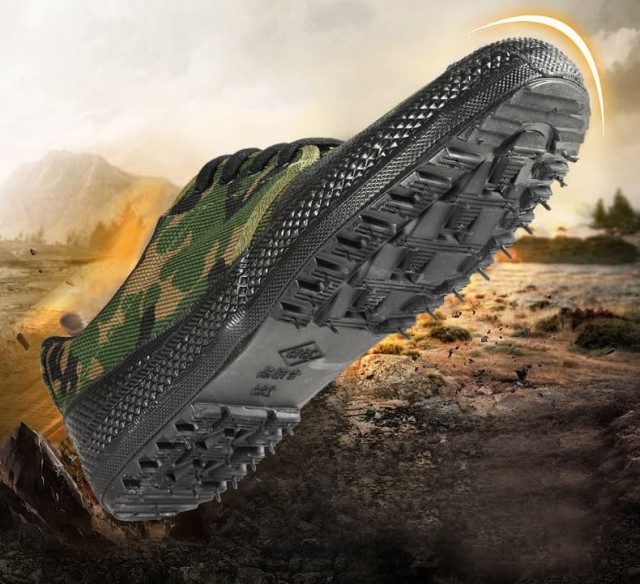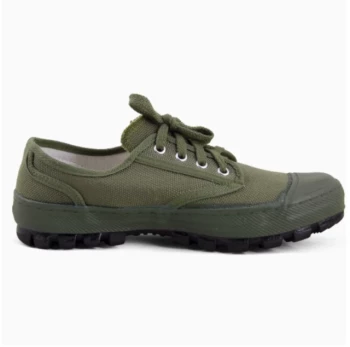Skateboarders demand footwear that delivers both iconic aesthetics and technical performance. Vulcanized soles have been a cultural staple since the 1970s, but modern skating pushes these materials to their limits. This guide explores the science behind vulcanization, performance trade-offs, and actionable enhancement strategies—helping you choose or design footwear that doesn’t sacrifice function for style.
Vulcanized Sole Fundamentals
The Chemistry Behind the Craft
Vulcanization transforms natural rubber into a resilient, moldable material through controlled heating. This process:
- Reduces stickiness while improving durability
- Enables bonding with other materials without adhesives
- Creates the classic "foxing tape" look synonymous with skate culture
Historically, the low-profile silhouette of vulcanized soles allowed closer board feel—a key reason brands like Vans adopted the technique. However, the same flexibility that enhances control also introduces performance limitations under extreme skating conditions.
Skateboarding-Specific Challenges
1. Impact Force Distribution
Vulcanized soles excel in flexibility but struggle to dissipate landing shocks. During ollies or stair drops:
- Energy concentrates in the ball and heel areas
- Thin walls compress quickly, reducing rebound support
2. Flex vs. Stability Trade-Off
- Soft flex patterns improve board grip for flip tricks
- Excessive bending risks foot fatigue during prolonged sessions
3. Heat Buildup During Repetitive Motion
Friction from constant grip-tape contact can:
- Soften rubber prematurely
- Accelerate sole wear in high-abrasion zones
Performance Enhancement Strategies
1. Advanced Insole Pairings
Combining vulcanized soles with performance insoles addresses shock absorption gaps. Look for:
- PU foam layers to dampen landings
- Arch support that doesn’t restrict board feel
2. Strategic Reinforcement Patches
High-wear areas (e.g., ollie zones) benefit from:
- TPU overlays to prolong sole life
- Localized rubber density adjustments for targeted stiffness
3. Hybrid Sole Construction
Emerging designs blend vulcanized aesthetics with cupsole-like support by:
- Layering carbon fiber shanks in the midfoot
- Using dual-density rubber (softer edges, firmer base)
Elevate Your Footwear Line with 3515’s Expertise
For distributors and brands seeking skate-ready footwear, 3515’s manufacturing capabilities deliver:
- Custom vulcanization tuning (density, flex patterns)
- Hybrid sole solutions that honor skate heritage while meeting modern demands
- Bulk production scalability without quality compromises
[Contact 3515] to develop performance-optimized skate shoes that resonate with today’s riders.
Key Takeaway: Vulcanized soles remain culturally irreplaceable, but strategic material science upgrades can bridge the gap between their iconic look and the demands of contemporary skateboarding.
Related Products
- Wholesale High-Traction Camo Boots - Custom Manufacturer for Brands
- Durable Rubber-Soled Utility Shoes for Wholesale & Custom Brand Manufacturing
- Wholesale Durable Camo Canvas Shoes with High-Traction Rubber Soles
- Durable Canvas Work Shoes with Rubber Lug Sole | Wholesale Manufacturer
- Durable Rubber Sole Outdoor Shoes Wholesale & Custom Manufacturing
Related Articles
- How Military Camouflage Boots Outperform: Engineering for Extreme Survival
- How Vulcanized Rubber Boots Outperform Standard Footwear: Science and Practical Benefits
- How Vulcanized Soles Engineer Superior Performance: A Science-Driven Guide for Athletes
- How Vulcanized Soles Fall Short—And When to Choose Alternatives
- Why Vulcanized Soles Dominate Technical Skateboarding: A Science and Performance Breakdown



















